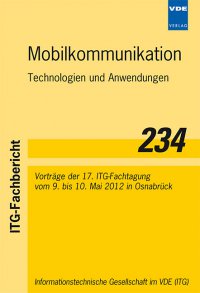Impact of Relay-to-Relay Interference on the Performance of LTE-Advanced Relay Networks
Conference: Mobilkommunikation - 17. ITG-Fachtagung
05/09/2012 - 05/10/2012 at Osnabrück, Deutschland
Proceedings: Mobilkommunikation
Pages: 6Language: englishTyp: PDF
Personal VDE Members are entitled to a 10% discount on this title
Authors:
Saleh, Abdallah Bou; Hämäläinen, Jyri (Aalto University School of Electrical Engineering, FIN-00076, Helsinki, Finland)
Bulakci, Ömer (Aalto University School of Electrical Engineering, FIN-00076, Helsinki, Finland )
Redana, Simone; Raaf, Bernhard (NSN Research-Radio Systems, Nokia Siemens Networks, St.-Martin-Str. 76, 81541, Munich, Germany)
Abstract:
LTE-Advanced Type 1 inband relay nodes support a two-hop decode-and-forward relaying mode where the relay backhaul link reception is time-division multiplexed with its access link transmission on different subframes. Most work on relaying downlink assumes the same synchronized subframe partitioning between the relay backhaul and access links among all enhanced Node Bs, aka DeNBs. However, according to 3GPP guidelines DeNBs independently decide on different sub frame configurations to adapt to cell load variations, which then results in access-to-backhaul interference, aka relay-to-relay interference. Such interference occurs on the downlink when a relay transmission on the access link interferes with a backhaul link reception at another relay. In this work, we evaluate the performance of simple subframe configuration alignment scenarios on the system performance of relay deployments within the LTE-Advanced framework considering 10-relay urban and suburban deployments. Results show that the negative impact of relay-to-relay interference on the system performance of relay deployments can be alleviated by intra-cell configuration alignment when utilizing directional antennas for relay backhauling.


